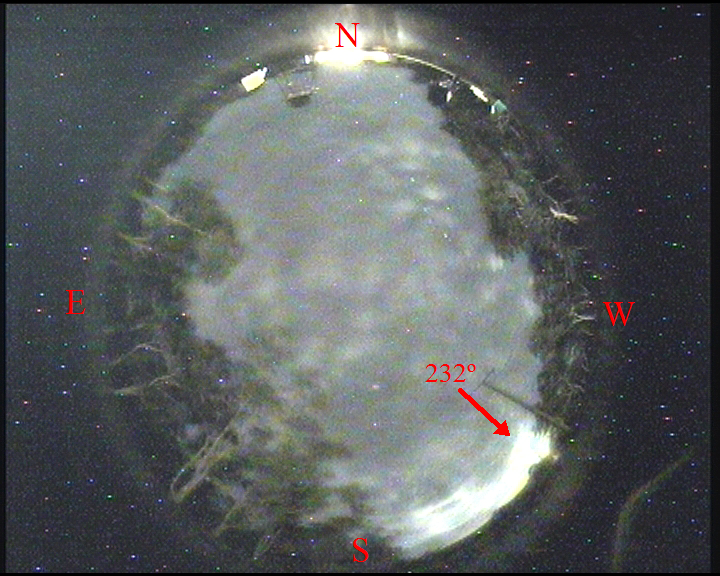2017-03-15 09:45:04→09 (UTC)
 This
fireball was captured
beautifully by a car dashcam which was driving around 270km
distant from the event, and shows the duration time of the
fireball of around 5 seconds, reaching peak brightness at around
09:45:08UTC. By analysing this video and from other sighting
reports, Ray Pickard of Bathurst
Observatory was able to determine a terminal location of the
fireball of around -33.36968,
145.94774, with an uncertainty of around 10km. This
location is 387km distant from EPSO, on a bearing of 232º, which
corresponds with the direction of the flash shown in the adjacent
EPSO all-sky camera image (click on image to view full
size). It is interesting to note that this flash illuminated
the thin overhead cloud and looks very similar to a typical nearby
lightning flash, so given the distance it was a very bright flash
indeed.
This
fireball was captured
beautifully by a car dashcam which was driving around 270km
distant from the event, and shows the duration time of the
fireball of around 5 seconds, reaching peak brightness at around
09:45:08UTC. By analysing this video and from other sighting
reports, Ray Pickard of Bathurst
Observatory was able to determine a terminal location of the
fireball of around -33.36968,
145.94774, with an uncertainty of around 10km. This
location is 387km distant from EPSO, on a bearing of 232º, which
corresponds with the direction of the flash shown in the adjacent
EPSO all-sky camera image (click on image to view full
size). It is interesting to note that this flash illuminated
the thin overhead cloud and looks very similar to a typical nearby
lightning flash, so given the distance it was a very bright flash
indeed.At a range of 387km, any P-wave seismic signal caused by the fireball would have taken around a minute to arrive at EPSO, with the S-wave arriving around 47 seconds after that. No such waves appear in EPSO seismic data, and likewise from the possible acoustic wave which would have taken around 19.5 minutes to arrive.